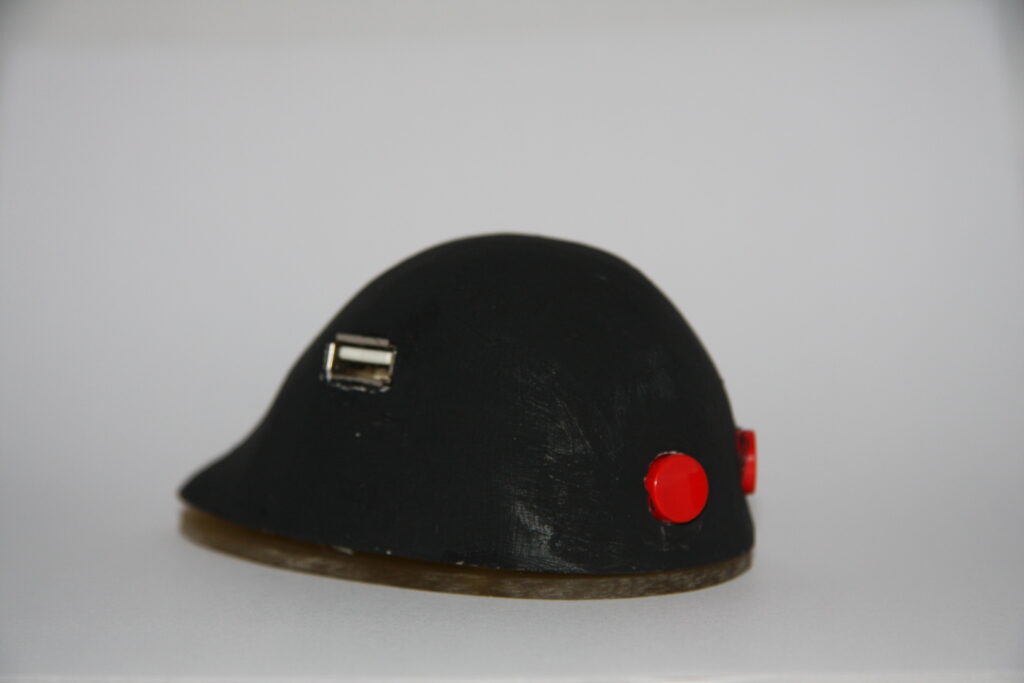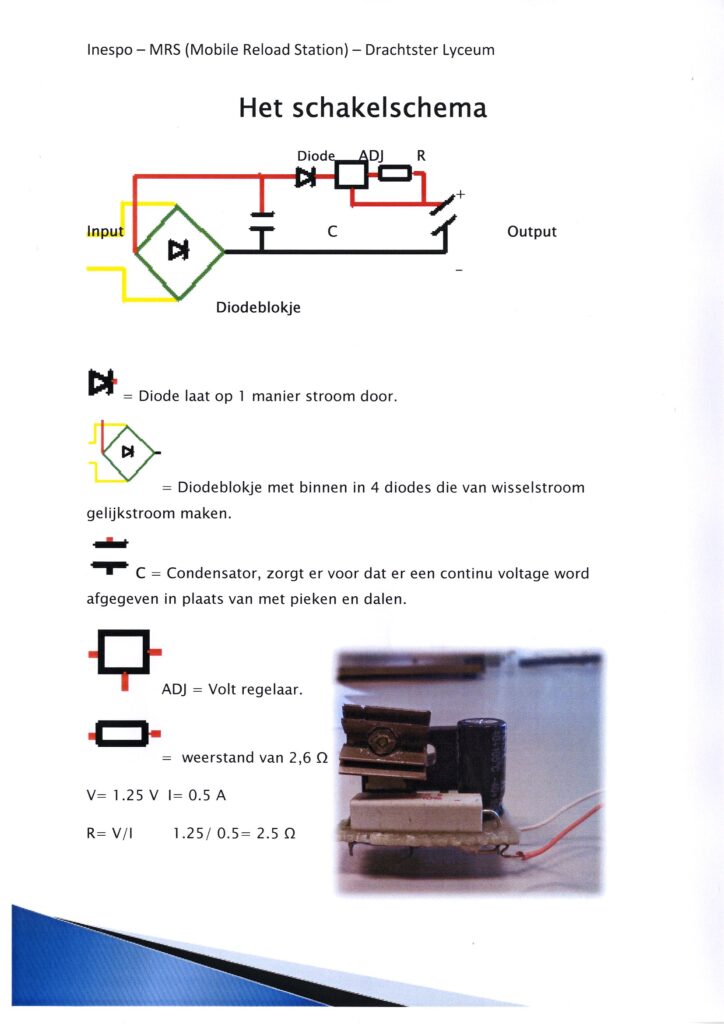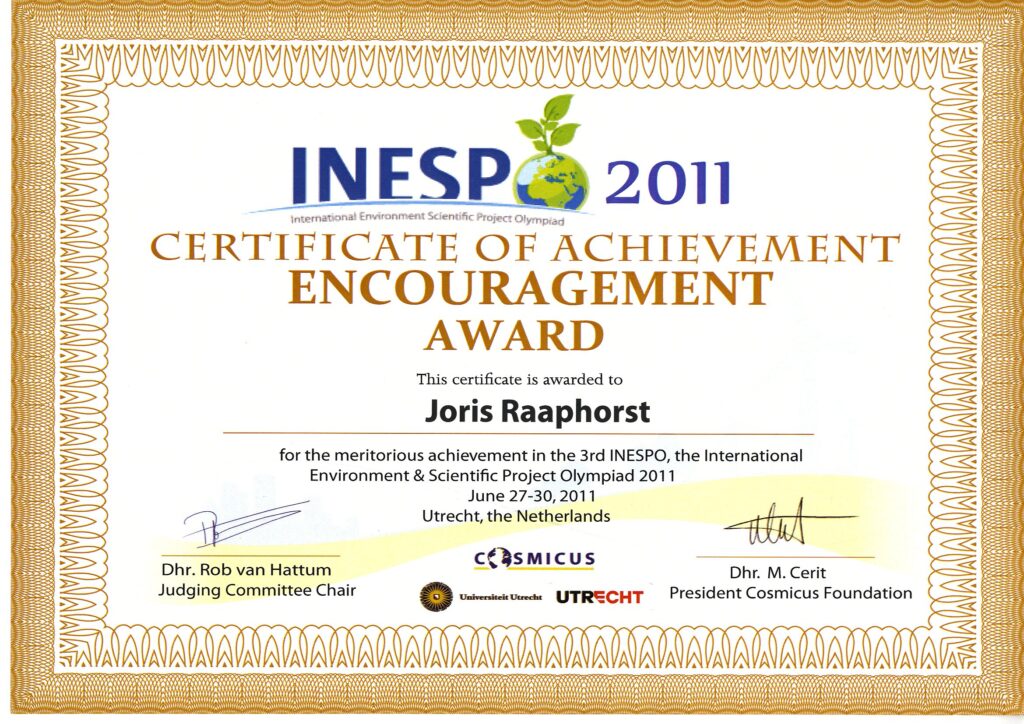PWS – INESPO
MRS – Mobile Reload Station

The Mobile Reload Station (MRS) is a charger designed to connect to a bicycle’s dynamo, using a USB connection to charge any device. Since most Dutch people own a bike and a mobile phone, the MRS has a large target audience and, with low production costs, has the potential to be a highly profitable product. Our prototype was presented at the International Science Fair, Inespo, in Utrecht, where we secured fourth place and received a 10 for our secondary school PWS project. The project covered ideation, casing design, electronics, and marketing.
We developed a system that converts the alternating current from a bike dynamo into direct current to charge mobile devices. The system can charge phones efficiently with minimal cycling effort. Key challenges included power output, component overload, and ensuring the device fit on a bike.
Our process began with energy efficiency and energy generation in mind. Given the dynamo is typically used only at night, we repurposed it to charge devices during the day. This universal charging solution became the MRS.
We first created a circuit diagram and assembled the components on a circuit board. Several issues arose during production, such as poor soldering and connections, which were resolved by adding a cooling element to the ADJ to prevent overheating.
Calculations:
Our goal was to achieve 500 mA, which required calculating resistor values. Using a 2.6 Ω resistor, we achieved 480 mA—enough to charge a 1000-1600 mA mobile phone battery in about 2/3 hours. Half an hour of cycling also provided sufficient charge for a day’s use.
Design Process:
The design phase involved considering size, input/output needs, and aesthetic appeal. After brainstorming and sketching multiple designs, we finalized one. We created molds from wood and silicone but encountered challenges in removing the wooden mold. Ultimately, plexiglass dissolved in acetone was used to complete the mold.
Costs:
The product’s production cost was kept low, totaling €6.70, including components like the circuit board, ADJ, capacitor, diode, resistor, and USB output. With a selling price of €10, we projected a profit of 49.3%, and at €15, the profit would reach 123.9%.
Conclusion:
Considering its low production cost and large market potential, the MRS is positioned as a profitable, green, and eco-friendly product. It simplifies consumers’ lives by leveraging new technologies. INESPO was a rewarding project where task division and teamwork were key to our success.

